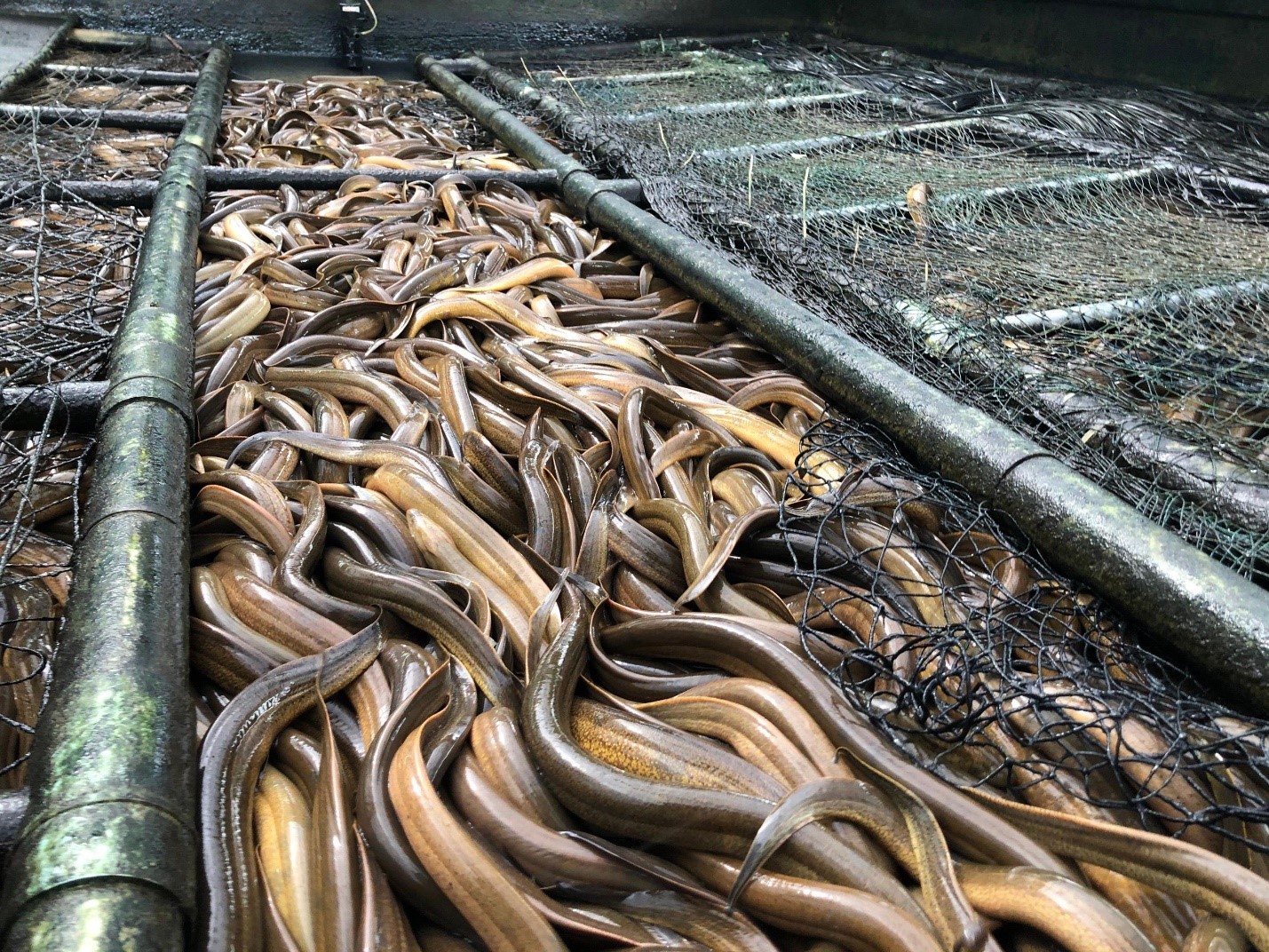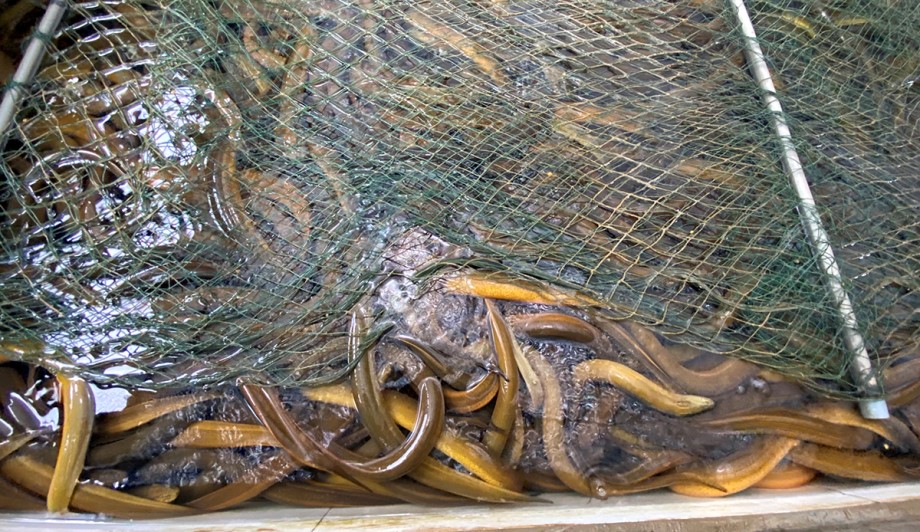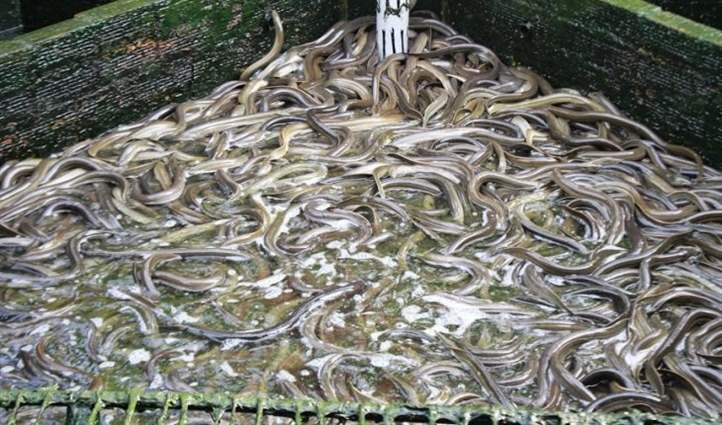Eel is a food with high nutritional value, containing many important proteins, vitamins, and minerals with effective farming technique giving high profits. What are the issues involved in effective disease prevention for mud-free eel farming?
Eel is an aquatic species with high economic value, chosen by many households to raise. Mud-free eel farming is an increasingly popular model because of its advantages of saving space and less environmental pollution. However, to ensure economic efficiency, farmers need to focus on preventing diseases in eels. Due to their physical characteristics and behavior, eels are very susceptible to disease.
I. CAUSES OF DISEASE IN MUDLESS EELS
Eels have quite high resistance. In natural ecological conditions, they are rarely infected with diseases. However, in artificial farming conditions, they get sick a lot due to the farming process not managing the stages of raising density too high, unreasonable feed, poor environmental conditions, dirty rotten water, etc., which makes them to reduce resistance and become infected with diseases, affecting growth and survival rate. Therefore, while raising eels, disease prevention must be given the priority.
Mudless eels can suffer from bacterial, parasitic, fungal and environmental diseases.
– Bacteria: Causes diseases such as skin ulcers, tail rot, bleeding, etc.
– Parasites: Cause intestinal diseases, swollen gills, eel lice, etc.
– Fungi: Causes white spot skin disease, gill rot, etc.
– Environment: Dirty water, pollution, lack of oxygen, etc.
Image of raising eels without mud
II. EFFECTIVE PREVENTION
– Choose quality, healthy, and uniformly sized eels to avoid stocking eels because when they are hungry, the eels compete for prey and can eat each other. The breed is slimy, not scratched, the belly is not red, and there is no bulging gills.
– Do not keep injured eels. During the process of catching natural breeds, farmers do not use tools to injure the eels, such as hooks that can easily tear the eel’s oral cavity, pharynx and throat and are susceptible to infection. Absolutely do not raise eel breeds electricity and drug bait.
– Should not choose breeds from sources that are lured with drugs or herbs, these substances will destroy blood cells or damage the intestines. Breeding eels lose mucus from the anus gradually to the tail, or from 1/3 of the body to the head, especially the gill cover edges are red or light purple. Around the eel’s anus, there are red or bleeding spots.
– Raised at reasonable density. It is necessary to disinfect eel breeds, feed and eel farming equipment. Before stocking, bathe the eels with 20 ppm potassium permanganate for 15-20 minutes or 3% salt water for 5-10 minutes.
– Feed must be cleaned and cooked. Ensure complete and clean, not damaged or rancid. Regularly clean the feeding net and disinfect eel farming equipment. Promptly clean up leftover feed.
– During the farming process, it is necessary to ensure a suitable water environment: Temperature from 23 – 28 degrees Celsius, PH 6.5 – 8, Salinity not more than 6 parts per thousand.
Image of raising eels without mud
Feeding:
– During the care process, farmers must master the rule of 4 determinations (quality, quantity, timing and location) to adjust feed appropriately.
– Because eels have a nocturnal habit, they catch prey strongly in the evening. However, to facilitate care and management, you can train the eels to eat in the morning. Observe eels catching prey so as to adjust the amount of feed accordingly and with leftover feed, 1 hour after feeding to limit water pollution.
– Note: Because eels are very selective in their feed choices, it is very difficult to change to another type of feed. Changing feed suddenly will cause the eels to eat poorly, even stop eating and be susceptible to gastrointestinal diseases. Therefore, during the farming process, if change the feed, change it slowly so that they can get used to it and adapt to new feeds, along with digestive enzyme supplements during the transition.
Water exchange:
– Due to intensive farming and the characteristic of being an aquatic species with scaleless skin, eels are very sensitive to the water quality of their living environment. Therefore, the water in the tank must be changed every day (100%) after feeding 2-3 hours to keep the tank water clean. The water source is not contaminated with pesticides, domestic wastewater, or industrial chemicals; PH 6.5-8. Always maintain the water level in the pond about 30 – 35 cm just to cover the substrate.
– Farmers need to closely monitor the eel’s daily feeding situation and the eel’s level of prey capture. Regularly monitor the weather, check temperature and water quality, ensuring clean water.
– Periodically mix A Vita C max into feed to increase resistance and use biological products, A Bio L to limit water pollution.
Image of raising eels without mud
Timely detect eels showing signs of disease or unusual symptoms or floating heads for timely handling and treatment.
Disease prevention for raising eels without mud is important farming techniques. Farmers know the information about causes of disease such as bacteria, parasites, fungi and the environment, along with specific disease prevention measures such as selecting quality breeds, managing stocking density, ensuring feed quality, and maintaining a suitable water environment.



